Myanmar
Things to DO
Pyay
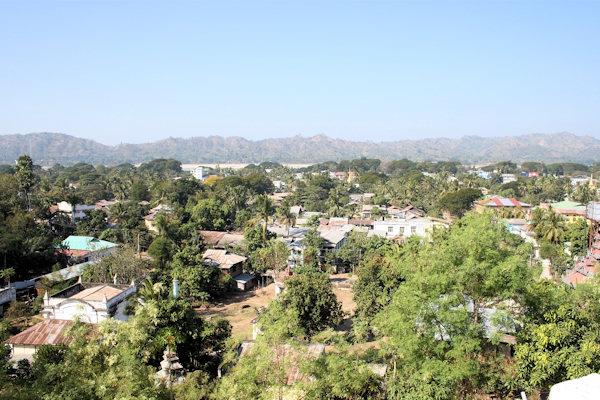 |
|||||
Pyay, a quiet, stupa-studded Ayeyarwady town, can fill a good day, with ruins, hilltop pagodas and a nice market.
The current town site became an important trading centre during the Bagan era. The mon controlles it when Burmese King Alaungpaya
conquered it in 1754.
Today it's an important cargo town still, set at a transshipment point between Northern ans Southern Mayanmar.
Payagyi Paya
This towering Pagoda served as one of the four corners that bounded the ancient town.
Its breastlike structure is slighly swollen, with some vegetation growing out of cracks in the exposed bricks.
Three terraces encircle it from its base; it most likely dates from the 5th- or 6th-century.
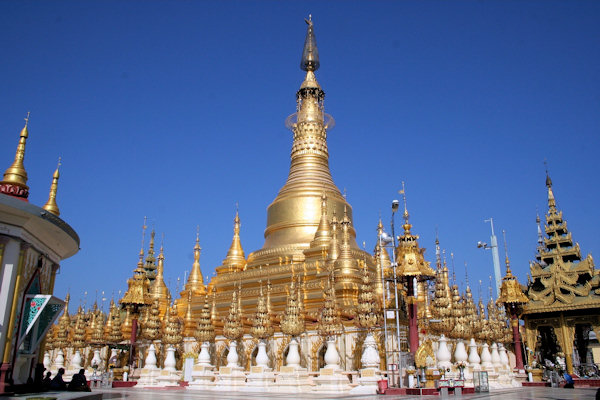 |
|||||
Set on top a hill in the centre, the stunning Swesandaw Paya is not only Pyay's biggest point of interest, but one
of the country's biggest Buddhist pilgrimage sites.
Legend goes that it was built by a couple of merchants (with the kings help) in 589 BC, and that the golden "zedi"
houses four strands of the Buddha's hair (the Golden Hair Relics)
Atop the zedi are to "hti" (umbrellalike pinnacles), unusual for Myanmar. The lower, bigger one dates from Pyay's
days as a Mon city. The higher, smaller one was added by Alaungpaya as a symbol of peace between the Burmese and Mon, after
brutally capturing the city in 1754.
The panoramic vieuws from the pagoda are pretty great too. To the east you'll see the Sehtatgyi Paya (Big Ten Storey),
a giant seated Buddha watching over the Shwesandaw eye-to-eye.
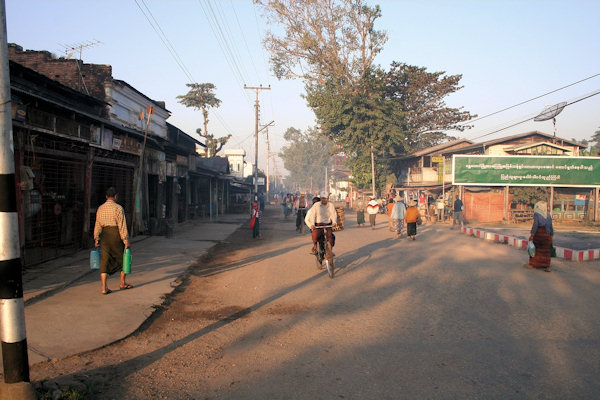 |
|||||
The small town Shewdaung, just 14km south of Pyay, contains the famous Shwemyetman Paya; "Paya of the Golden
Spectacles", a reference to the large, white-faced sitting Buddha inside the main shrine.
Spectacles were first added to the image during the Konbaung era (1783 - 1823), when a nobleman offered them to the temple
in an attempt to stimulate local faith through curiosity.
Word soon spread that the bespectacled Buddha had the power to cure all ills, especially afflictions linked to the eyes.
The firts pair of spectacles was stolen at an early stage, and a second pair was made and enshrined inside the image to protect
it from thieves.
An English officer stationned in Pyay during the colonial era, had a third pair fitted over the Buddha's eyes after his wife
suffered from eye trouble and the abbot suggested such a donation. Naturally, as the story goes, she was cured.
It requires nine monks to remove the present glasses for their fortnightly cleaning.
Pathein
For the country's fourth-largest city Pathein seems compact and small. It receeives few visitors so you're likely draw lots
of smiles and curious stares.
Most travellers only stop off on their way to the beaches on the west coast, yet the workshops that produce colourful, hand-painted
parasols, along with the shady, tree-lined cillage lanes to the northeast of the market, are worth a stroll.
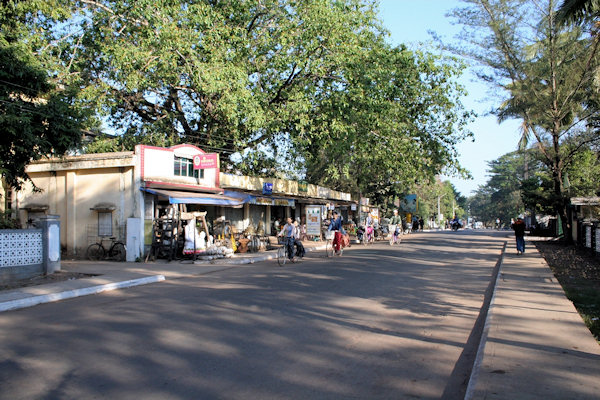 |
|||||
In the centre looms the golden, bell-shaped stupa Shwemokhtaw Paya.
One legend says it was originally built by India's Buddhist King Asoka in 305 BC as a small stupa called "Shwe Arna".
Standing 2.3m tall, this original stupa supposedly enshrined Buddha relics and a 15cm gold bar.
Another legend says a Muslim princes named Onmadandi requested each of her three Buddhist lovers to build a stupa in het honour.
Whichever story you choose to believe, Bagan's King Alaungsithu is thought to have erected an 11m stupa called "Htupayon"
over this site in AD 1115.
Then, in 1263 King Samodagossa took power, raised the stupa to 40m and changed the name to Shwemokhtaw Paya, wich means
"Stupa of the Half-foot gold Bar".
Chaungtha Beach
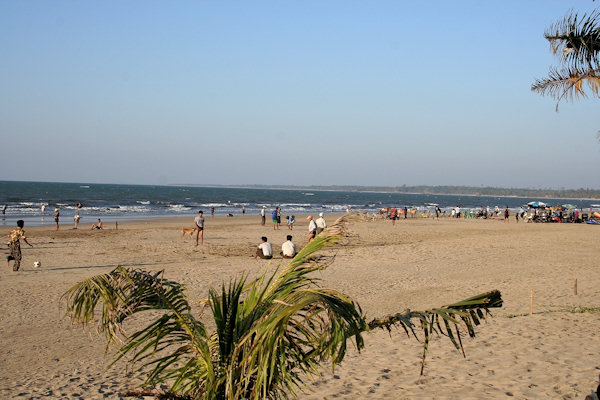 |
|||||
A trip to Chaungtha Beach, 40 km west of Pathein on the Bay of Bengal, is a change to experience what the Mayanmar
middle class does on vacation.
The beach gets especially crowded on holiday weekends when local tourists are ferried in by busload.
No matter what the time of year, beach activity is at its hight in the afternoon when children take their first horse ride,
freelance photographers comb the beach on the lookout for their next shoot, fully clothed families wade into the water and
elaborate picknics are staged only to be broken up by the path of a wayward football.
Most Chaunghta residents fish, or farm coconuts for a living.
East of the main village area is a mangrove swamp and a canal beach with a wooden jetty.
But by al means Don't mis the sunset.